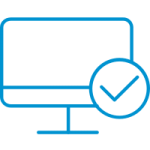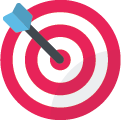Swift Six: Vital elements for the perfect landing page
Have your landing pages got what it takes to turn visitors into customers? In the latest Swift Six video, I’ll guide you through the key elements of a highly-converting landing page. If you’ve never considered the kind of experience your site offers first-time visitors, or you’re worried that you’re missing something vital then this is for you.
So first of all, the first one is your unique selling proposition. So you need to make your unique selling proposition the primary thing that your user engages with, that your visitors engage with when they land on your page. It needs to be the main reason why they might want to buy your product or get in contact with you or engage your service. So here I am talking about a main headline.
Secondarily, you can usually support that main headline of your USP (Unique Selling Proposition) with a sub headline, something to add a little bit more flavor, a little more colour to help people pad out that message a little bit more.
The third thing about your USP, and this is something that will run throughout the page, is to use clear sub headings. There’s nothing worse than a big block of text, users will not engage with it. So if you do have quite a lot to say, be sure to break it up with some nice sub headings. And then the final thing is a closing argument, a short paragraph, perhaps just a sentence, that final clinching point to make people want to buy your product or take out your service.
Ok, the second thing that’s really important is great visuals. There is nothing that lets a landing page down like a poor photo or a poor image that really doesn’t show off the product well and doesn’t give people a good idea of what is all about. It’s absolutely worth investing in some good product photography; or perhaps, if you are using photography to advertise a location that you get that shop really well, don’t try to do it on your mobile phone, it doesn’t work, it’s the biggest way in which you can turn your website visitors away from that landing page.
Third thing – and so many websites forget to do this – what are the benefits of what you are trying to sell? Don’t tell me, I’m not talking here about what the product is or the service is, I’m talking about what it can do for the potential customer. People seem to only talk about what they have rather than what it can do. So it’s really key to have a bullet point list on how this is going to solve the problem that the customer, that the visitor is facing. Be sure to focus on the benefits rather than just the features of what you do. And a bullet point list of course makes it really easy for people to just scan through and get the meaning. It’s not going to be intimidating, again, like a block of text.
So, the fourth thing – lots of people miss this out – put the price on there. People want to know what their commitment is going to be as soon as they arrive on that page. And it might be that it’s somewhat challenging for you to put a price because maybe you provide a service and it all needs some kind of bespoke quotation; but nevertheless you need to give somebody an idea of what their commitment will be, what their financial commitment will be if they get in contact with you or if they choose to buy. It’s some way of pricing things up.
The fifth thing is something that gets spoken about a lot in online marketing, it is social proofing. Social proofing is when you show the image and usually accompanying text of someone who has been facing the same dilemma as you have but has decided to buy anyway. So, it’s a fancy way of saying that it is a testimonial. Because, if your website visitor sees that someone just like them has been in that situation and has decided to buy, they’ll get great reassurance around that and they’ll feel like they’re part of a group decision that makes sense and that other people have faced it before and other people will face it again.
Then the final thing is – be sure that your landing page has a call to action. So a call to action is what you want that website visitor to do next. Do you want them to click on a button and buy Do you want them to click on a button and get in contact? Do you want them to phone up? Do you want them to find out more information? What do you want them to do? Decide what the point of that landing page is. That’s your call to action.
OK, that was ‘The six elements of a winning landing page’ and this was 123-reg Swift 6! Thanks very much!
Further reading
This infographic from KissMetrics provides a handy visual guide to what you need for a landing page.
Once you’ve mastered the basics of a good landing page, this post from Copyblogger can help you make it great.
If you want to take a deeper look at user experience then watch this presentation from Barney Grossman, our very own expert on the matter.







